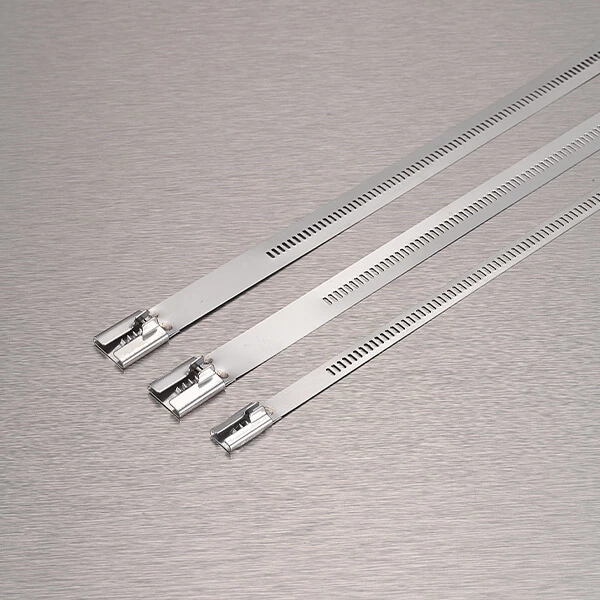Strength Analysis Of Stainless Steel Cable Ties
Heavy duty steel cable ties are widely used in industry and everyday life to secure cables, pipes, and mechanical components. However, their strength performance varies significantly across different application scenarios, making understanding their strength characteristics crucial for ensuring structural safety.
Material and Structural Properties of Stainless Steel Cable Ties
Locking cable metal zip ties are primarily made of austenitic stainless steel (such as the 304 and 316 series), which offer excellent corrosion resistance and mechanical properties. Their strength is primarily influenced by material composition, processing technology, and surface treatment. For example, 316 stainless steel, due to its molybdenum content, offers enhanced corrosion resistance and is suitable for use in marine environments.
Factors Influencing Strength Properties
1. Material Composition: The type and content of alloying elements directly influence a cable tie's strength and corrosion resistance.
2. Processing: Cold working can increase a cable tie's yield strength but may reduce its ductility.
3. Surface treatment: Treatments such as electroplating and spray coating can improve a cable tie's corrosion resistance but may compromise its strength.
Strength Performance in Practical Applications
The strength performance of metal cable tie price has been extensively verified in multiple projects since January 2024:
> Offshore Wind Power Project: 316 stainless steel cable ties were used to secure cables to offshore wind turbine towers. After long-term exposure to marine environments, they showed no signs of breakage or significant corrosion.
> High-Temperature Environment Application: 304 stainless steel cable ties were used to secure high-temperature pipelines in steel mills, demonstrating excellent high-temperature resistance without deformation or breakage.
These cases demonstrate that metal locking cable ties exhibit excellent strength performance under specific conditions.
Optimization Strategies and Recommendations
1. Selecting the Appropriate Material: Select the appropriate stainless steel grade based on the application environment. For example, 316 stainless steel is preferred for marine environments.
2. Designing the Processing Technology: While ensuring strength, avoid excessive cold working that reduces ductility.
3. Surface Treatment: For corrosive environments, appropriate surface treatment methods, such as electroplating or spray coating, are used to improve corrosion resistance.
Conclusion
As an important fixing tool, the strength of metal wire cable ties directly impacts the safety of the structure. In practical applications, the strength of stainless steel cable ties can be significantly improved through the rational selection of materials, optimized processing technology, and surface treatment. In the future, with the advancement of materials science, the performance of metal zip strips is expected to be further improved to meet the needs of more complex environments.



